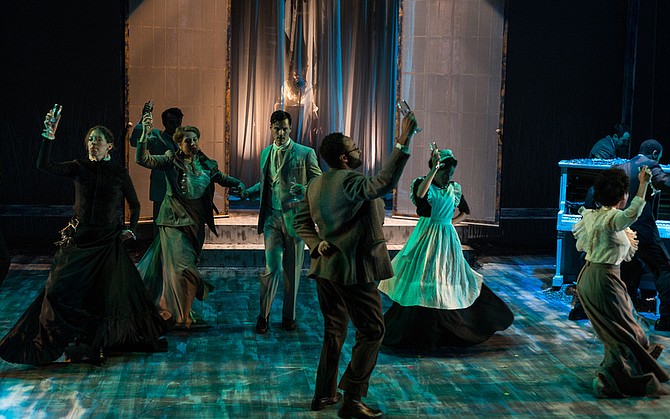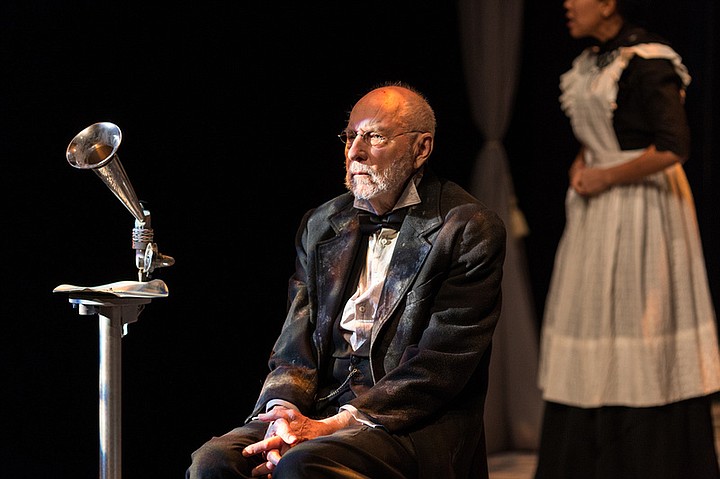 Facebook
Facebook
 X
X
 Instagram
Instagram
 TikTok
TikTok
 Youtube
Youtube

How many plays have the rent past due, foreclosure banging down the door, a way of life on the ropes? Hundreds? Thousands? Ah, but how many display the event through countless pairs of eyes, and are even half as eloquent as Anton Chekhov’s The Cherry Orchard?
If the Ranevsakaya’s country estate, and its famous cherry orchard, were a circle, then the family at the center drifts toward the margin, and finally outside. And when he buys the land, Lopakhin, born a serf on the property, moves from the margin to the middle.
But Lopakhin isn’t an evil-reeker, like Simon Legree. He’s an “honest person,” Chekhov wrote, “and he must behave as one who is completely decent and intelligent.” And the family, much to their surprise, might be a bit better off.
That’s one action. Chekhov adds another: take the same circle; slice it like a pie, or pizza. Each slice is a point of view about what must be done – and what will befall that particular slice if it isn’t.
Now spin the circles: one clockwise, the other counter-. Have the slices collide and ricochet. But make the chaos — now funny, now sad, now hurtful — crystal clear. To do that you may have to invent a new genre: concrete impressionism.
For UCSD Theatre, director Emilie Whelan places Firs, the 87-year-old servant, outside the pie. Cherry Orchard becomes a memory play taking place in his mind. The piece develops like a photograph, from vague darkness behind a white screen, to light and then hyper-colors — stage-sized oranges and greens — and then recedes to the spot where old Firs chooses to rest.

The choice privileges Firs. He watches his dream/memory of the estate crumble, and watches the people he has served, and loved all his life, frolic with childlike selfishness. He sees the beginning and the end.
But Chekhov doesn’t privilege. He’s the most democratic playwright who ever lived. The director’s choice provides insights into Firs — whom theater legend Theodore Shank plays touchingly like a Beckettian ghost. But it turns the complex tapestry into a melodramatic, often farcical, contest between the ignorant and the inane.
The concept also privileges entertainment over seriousness. Shtick abounds, be it from acting choices that upstage (led by Martin Meccouri’s focus-grabbing Gaev) to directorial bits, as when moving a recalcitrant piano off-stage takes precedence over important speeches, or when the script asks for a pair of rubber galoshes thrown on stage, and at least 20 come bombing in from the wing.
The Cherry Orchard is funny. All Chekhov’s plays are. And all have bizarre moments, but they come from within, not without. The Firs-eye view, with its over-emphasis on getting laughs, weakened the performances of Terrance White (Lopakhin) and Caroline Stewart (Lyubov), who become lightweight, almost minor characters. It also set up comedic expectations, early on, that the opening night audience was reticent to let go. In effect, it sabotaged the spinning circles.


How many plays have the rent past due, foreclosure banging down the door, a way of life on the ropes? Hundreds? Thousands? Ah, but how many display the event through countless pairs of eyes, and are even half as eloquent as Anton Chekhov’s The Cherry Orchard?
If the Ranevsakaya’s country estate, and its famous cherry orchard, were a circle, then the family at the center drifts toward the margin, and finally outside. And when he buys the land, Lopakhin, born a serf on the property, moves from the margin to the middle.
But Lopakhin isn’t an evil-reeker, like Simon Legree. He’s an “honest person,” Chekhov wrote, “and he must behave as one who is completely decent and intelligent.” And the family, much to their surprise, might be a bit better off.
That’s one action. Chekhov adds another: take the same circle; slice it like a pie, or pizza. Each slice is a point of view about what must be done – and what will befall that particular slice if it isn’t.
Now spin the circles: one clockwise, the other counter-. Have the slices collide and ricochet. But make the chaos — now funny, now sad, now hurtful — crystal clear. To do that you may have to invent a new genre: concrete impressionism.
For UCSD Theatre, director Emilie Whelan places Firs, the 87-year-old servant, outside the pie. Cherry Orchard becomes a memory play taking place in his mind. The piece develops like a photograph, from vague darkness behind a white screen, to light and then hyper-colors — stage-sized oranges and greens — and then recedes to the spot where old Firs chooses to rest.

The choice privileges Firs. He watches his dream/memory of the estate crumble, and watches the people he has served, and loved all his life, frolic with childlike selfishness. He sees the beginning and the end.
But Chekhov doesn’t privilege. He’s the most democratic playwright who ever lived. The director’s choice provides insights into Firs — whom theater legend Theodore Shank plays touchingly like a Beckettian ghost. But it turns the complex tapestry into a melodramatic, often farcical, contest between the ignorant and the inane.
The concept also privileges entertainment over seriousness. Shtick abounds, be it from acting choices that upstage (led by Martin Meccouri’s focus-grabbing Gaev) to directorial bits, as when moving a recalcitrant piano off-stage takes precedence over important speeches, or when the script asks for a pair of rubber galoshes thrown on stage, and at least 20 come bombing in from the wing.
The Cherry Orchard is funny. All Chekhov’s plays are. And all have bizarre moments, but they come from within, not without. The Firs-eye view, with its over-emphasis on getting laughs, weakened the performances of Terrance White (Lopakhin) and Caroline Stewart (Lyubov), who become lightweight, almost minor characters. It also set up comedic expectations, early on, that the opening night audience was reticent to let go. In effect, it sabotaged the spinning circles.
Comments